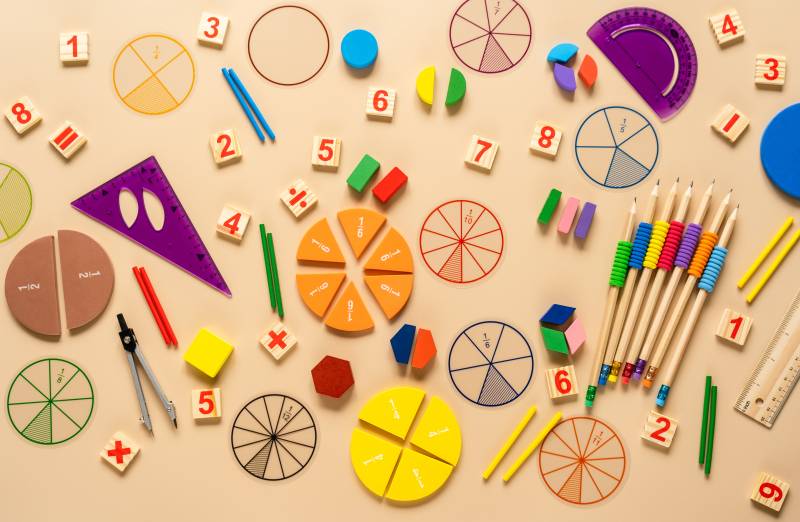The results also confirmed the widespread inequalities in U.S. education. Black and Hispanic students, on average, scored far below Asian and white students. Those from low-income backgrounds scored lower than their more affluent peers.
Andreas Schleicher, director for education and skills at the OECD, emphasized that the inequities in the U.S. are often misunderstood to be a problem of weak schools in poor neighborhoods. His analysis indicates that low math performance is common throughout U.S. schools. Some students are performing much worse than others within the same school, and that range between low and advanced students within U.S. schools is much greater than the range in scores between schools.
This new PISA test is the first major international education indicator since the COVID-19 pandemic closed schools and disrupted education. Test scores declined all around the world, but the OECD found there was only a small relationship between how long schools were closed and their students’ performance on the PISA test. School closures explained only 11% of the variation in countries’ test scores; nearly 90% is attributable to other, unclear reasons. However, the OECD looked at the absolute level of test scores and not how much test scores fell or rose. More analysis is needed to see if there’s a stronger link between school closures and test score changes.
Math performance has been deteriorating worldwide for two decades, but the US lags behind other advanced nations. Source: OECD PISA 2022.
Even if school closures eventually prove to be a more important factor, the pandemic isn’t the only reason students are struggling. Global scores have generally been declining for the past two decades. One hypothesis is that technology is distracting teenagers. Students were asked about technology distraction for the first time on the 2022 PISA. Forty-five percent of students said they feel anxious if their phones are not near them. Sixty-five percent report being distracted by digital devices during math lessons. Up to an hour a day of computer time for leisure was associated with higher performance. But heavy users, those who spent five to seven hours on computers for fun, had lower academic performance, even after adjusting for family and school socioeconomic profiles.
Another factor could be the rise in migration across the world. Perhaps declining test scores reflect the challenge of educating new immigrants. However, the OECD didn’t find a statistically significant correlation between immigration and academic performance on average. In the United States, immigrants outscored students with native-born parents in math after adjusting for socio-economic status. There was no difference between immigrants and non-immigrants in reading.
Japan was one of the few countries to defy the trends. Both its math and reading scores rose considerably between 2018 and 2022. Akihiko Takahashi, professor emeritus of mathematics and mathematics education at Chicago’s DePaul University, said schools were closed for a shorter period of time in Japan and that helped, but he also credits the collective spirit among Japanese teachers. In his conversations with Japanese teachers, Takahashi learned how teachers covered for each other during school closures to make sure no students in their schools fell behind. Some went house to house, correcting student homework.
It’s tempting to look at the terrible PISA math scores and say they are evidence that the U.S. needs to change how it teaches math. But the PISA results don’t offer clear recommendations on which math approaches are most effective. Even Japan, one of the top performing nations, has a mixed approach. Takahashi says that students are taught with a more progressive approach in elementary school, often asking students to solve problems on their own without step-by-step instructions and to develop their own mathematical reasoning. But by high school, when this PISA exam is taken, direct, explicit instruction is more the norm.
The new results also highlighted the continued decline of a former star. For years, Finland was a role model for excellent academic performance. Education officials visited from around the world to learn about its progressive approaches. But the country has dropped 60 points over the past few testing cycles – equivalent to losing three full school years of education. I suspect we won’t be hearing calls to teach the Finnish way anymore. “You have to be careful because the leaders of today can be the laggards of tomorrow,” said Tom Loveless, an independent education researcher who studies international assessments.
There was one bright spot for American students. Fifteen-year-olds scored comparatively well on the PISA reading test, with their scores dropping by just one point while other countries experienced much steeper declines. But that good news is also tempered by the most recent scores on the National Assessment for Educational Progress (NAEP) test, often called the Nation’s Report Card. Reading scores of fourth and eighth graders deteriorated over the last two testing cycles in 2019 and 2022.
Overall, the PISA results provide additional confirmation that U.S. students are in trouble, especially in math, and we can’t put all the blame on the pandemic.


